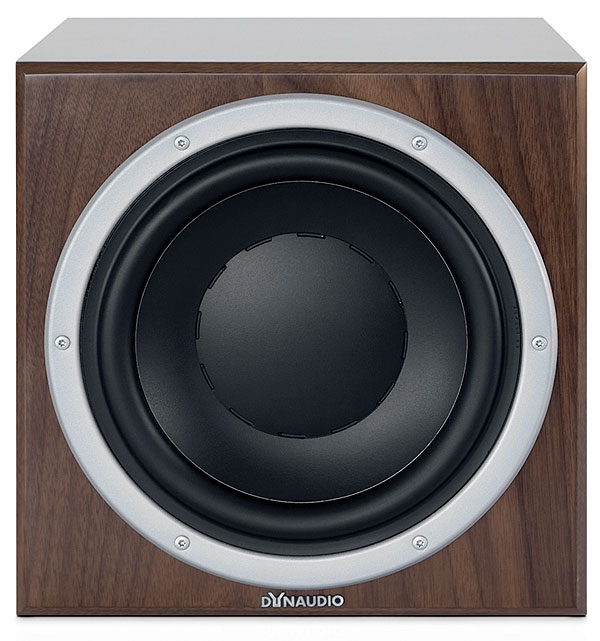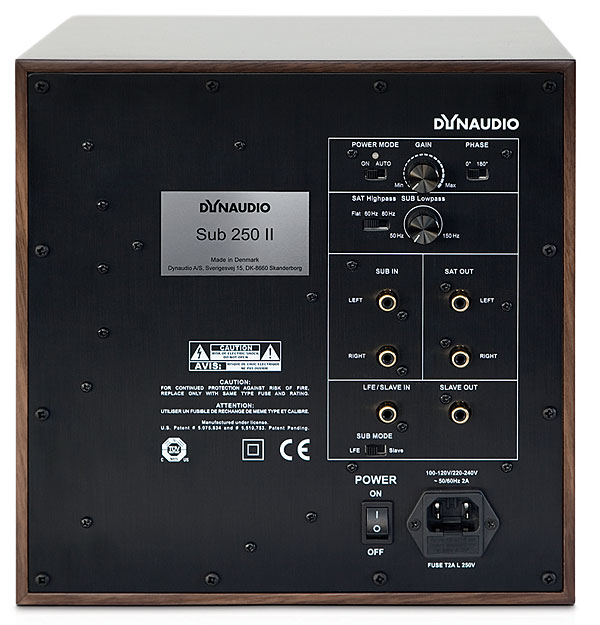Dynaudio Excite X14 Speaker System Page 2

Before we get to the answer, note that associated equipment included a Pioneer Elite VSX-53 A/V receiver, Oppo BDP-83SE universal disc player, Micro Seiki BL-21 turntable, Shure V15MxVR/N97XE cartridge, and Onix OA 21s integrated amp serving as phono preamp.
The Smarter Little Speaker
A speaker that sounds like it has more bass extension than it looks like it should often comes with a tradeoff, rolling off the top end to achieve more fullness in the middle and at the bottom. Gains in soundfield size are sometimes at the cost of losses in image specificity and texture. At higher volumes, you may still hear everything; at lower volume, though, detail becomes elusive. But the X14 and X24 had an open sound, with a top end that was revealing at any volume. The soundfield spread slightly beyond the positions of the speakers themselves, with good depth as well as width in the front soundstage. While the little sub wasn’t forceful, it was well controlled, dovetailing inconspicuously with the monitors and center at an 80-hertz crossover.
Despite rumors to the contrary, Jason Statham doesn’t pay me every time I mention him in a review, but his movies pose instructive dynamic challenges. With Parker (Blu-ray, DTS-HD Master Audio), the Excites scored high on the Statham Index, allowing me to withstand (and even enjoy) volleys of high-decibel effects in reasonable comfort. Even the cheap electric guitars on the soundtrack had a warmish, almost golden glow.
Now You See Me (Blu-ray, DTS-HD Master Audio) confirmed that the Excites are especially adept at movies, populating a big soundfield with natural vocals, smooth music, and an easy-listening approach to effects. Pounding drums, a staple of action movie soundtracks, were neatly split by the speakers and sub. Unlike many small subs, this one didn’t attempt to overcompensate for its size by bloating the bass range just under the crossover point. It delivered a modest amount of honest bass. The longer I spent with it, the more I respected it.

I did a lot of Netflix streaming in Dolby Digital Plus while the Dynaudios were in my system, bingeing through the second season of House of Cards and both seasons of Lilyhammer. The latter has the best selection of musical soundtrack garnishes in the history of television; Steven Van Zandt’s taste is encyclopedic and impeccable. The Excites made every song a treat, and the center delivered bilingual English/Norwegian dialogue forthrightly, without resorting to obvious enhancement.
Visions of Zimmerman
Much to my enchantment, Bob Dylan’s Blonde on Blonde arrived at my house in the form of a 45-rpm three-disc set from Mobile Fidelity Sound Lab. What this audiophile pressing of non-audiophile material lacked in refinement and delicacy, it made up for in raw immediacy and directness, and combined with the X14’s high resolution, it made me question the conventional wisdom that Dylan was never a great singer. His flesh-and-blood instrument shone through the silk-dome tweeters like a beacon, and it remained compelling even when I wandered off axis. The grooves and speakers kept other instrumentation in the background, where it belonged, though occasionally something like the crisp chop of electric guitar on “Visions of Johanna” would step forward.
Blonde on Blonde isn’t ideal drum-check material, so I went on to the Beatles’ Abbey Road (CD). Ringo Starr’s close-miked drums and Paul McCartney’s swooping bass on “Come Together” were surprisingly powerful. Even more eyebrow-raising, when I cut out the sub and played the speakers full-range, the kick drum and toms were still meaty and satisfying—yes, even on the drum solo of “The End.” I’ve rarely heard such extended and propulsive bass from small speakers; the only comparable recent specimen I can recall is GoldenEar Technology’s Aon 2. The Excite X14 can support modestly credible home-theater-worthy bass without the assistance of a sub. (If the bass is too strong in your room, foam port bungs are provided.)
Joe McQueen’s Ten at 86 is one of Ray Kimber’s IsoMike recordings, recorded in DSD and delivered on SACD in both four- and two-channel formats. The recording technique uses heart-shaped baffles to separate the left and right microphones and cancel crosstalk between them. With no close miking, here’s where a less subtle, little-trying-for-big speaker would have gone wishy-washy. But with four X14s in operation—and despite the silencing of the center channel—the saxophone was solidly imaged and anchored in a large, discernible space, with ambience organically integrated.
With complex and variable orchestral material, the Excites changed their personality the way you might change into a fresh shirt on a muggy day. With Bach’s Brandenburg Concertos (Masaaki Suzuki, Bach Collegium Japan, 5.0-channel DSD recording, BIS SACD), the silk-dome tweeters didn’t dumb down either the piercing treble of the original-instrument strings or the surprisingly aggressive dual French horns in the first movement of Concerto No. 1. But they mellowed out the midrange for the late-1970s Beethoven symphony cycle by Herbert Blomstedt and the Staatskapelle Dresden (performed on modern instruments, recorded in analog, and delivered on CD). In fact, the string sound was a little reticent, and for the first and only time, I missed my Paradigm Studio 20s. Swapping them in improved the resolution and proportioning of the upper strings. The monitor’s and subwoofer’s pitch control on the lower strings was impeccable.
Dynaudio’s revised Excite line is everything a high-end compact speaker should be. The gorgeous finish affords an excellent first impression and makes the product easy to live with, even when it’s competing with other high-end furnishings. These four monitors and center produce a wide, deep soundfield. Even with just two of the monitors operating, the soundstage is generous and populated with palpable images. And bass is eyebrow-raisingly full, with or without the Sub 250 II—though the little sub did keep pace with the speakers’ responsiveness and pitch control. If you want a small speaker that’s as lusty as your appetite for movies and as adventurous as your musical taste, these handsome Dynaudios will do the job with virtuosity and style.























































